My FUT Hair Transplant: The First 5 Months
Those who have seen me in the last 5 months, or seen my updates on Facebook, will have noticed a slight change in appearance.
I’ve piled on 200 lbs and taken to smoking cigars.
I’ve had a hair transplant.
I know, I know.
It’s not often you find affiliates posting about hair transplants.
Probably because they have some sense, and/or know what a Flog is.
What follows below is a long, meandering post riddled with insecurities, selfies and follicular challenges that would probably have halved my FeedBurner count back in the day.
Still, this blog is nothing if not personal.
If you’re intrigued to know what the process of getting a hair transplant is like… well, count your magic beans.
If you have no such interest… see you next time.
If you’d prefer to skip straight to sending me Hate Mail, please find the comment form attached below.
Got all that?
Right, let’s see loads of pictures of me.
Why a Hair Transplant?
It’s funny, but one of the first questions I get when I mention the transplant is… why?
Why would you do that?
The answer, if it wasn’t already obvious, is MPB: Male Pattern Baldness.
I had it, mate.
Loads of it.
I was going SuperBald.
The Longer Story:
I’ve been the reluctant owner of a thinning and receding hairline since my early 20s.
As young as 20, 21…
While it’s not something that I’d lose sleep over — especially back then — I’ve never been exactly chuffed with my prospects up top.
What started as a few innocuous comments from friends in the pub (“You’re going bald, you slag“), lead to self-examination in the mirror (“Hmm, little bit more light bouncing off the dome than usual…“), which in turn lead to scrutinising my latest tagged photos on Facebook (“Untag.“).
Nevermind the drunken dinosaur I saw staring back; the shouting, stupid, sweaty mess parading as myself on a nightclub floor — often horizontally — oh no… that was to be expected.
What unsettled me was the fraying temples.
I resented the idea of losing hair in my early 20s.
So, I told myself, I’d just wait for the inevitable and then change tacks.
“Yes, Finch, the signs are there. You’re probably going to lose most of this hair. On the bright side, people will stop calling you James Blunt. On the downside, you’re not built for baldness, my friend. So, here’s what we’ll do… We’ll wait until it’s all gone, and then we’ll hit the gym HARD. Slender and bald? No, no. Not gonna work. The answer is pile on muscle. Fast and FURIOUS.”
In other words?
Compensate.
When it’s gone, forget about it
Just get Buffting, instead.
Amirit?
That soothed me, for a while.
But it didn’t stop the scrutinising (“Oh hair, where art thou?”) in each round of tagged FB photos.
I’m not sure what coaxed me towards sitting down one day and researching cures, but I credit LASIK surgery 2 years ago with opening my eyes (literally) to what’s possible if you have money and a good surgeon.
So, 5 months ago, I remember vividly…
A couple of lazy Google searches on the sofa.
- Best Ways to Restore Hair
- How Do Hair Transplants Work
“This is how suckers get rebilled…” I thought.
It didn’t take long to stumble across the many case studies of FUE and FUT surgery.
Within a few hours, my mind was made up: “Fuck it, I work from home, I can keep a low profile for a couple of months if need be…”
So, I set up a consultation for the following week.
And proceeded to read a thousand Before/After hair journeys like the one I’m posting now.
Choosing the Clinic
Bangkok has several high quality hair transplant clinics.
I went with the DHT Clinic based in Ari.
It’s led by Dr Damkerng Pathomvanich (Dr Path) who has an excellent reputation, and a formidable track record for Making Noggins Great Again.
There were cheaper options available, but you’ve got to be slightly masochistic to invest in a hair transplant only to leave the quality to fate.
The Consultation
What happens at a hair transplant consultation?
First step was to diagnose my current state of hairloss on what is known as the Norwood Scale:
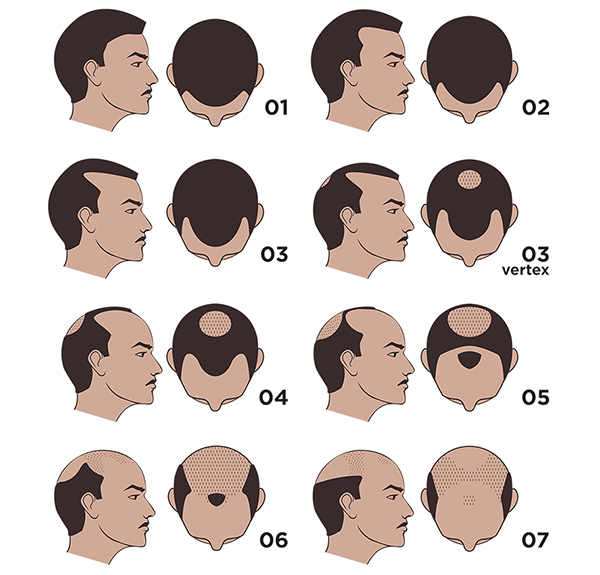
I was currently a Norwood 3, but heading towards a Norwood 4/5 based on male pattern baldness running through my family.
Anybody reading this now who is hovering around stages 2/3, but doesn’t want to get a transplant, I have one word for you:
Finasteride.
Well, two actually:
Finasteride and minoxidil.
Had I known about these drugs five years ago, I probably wouldn’t have had (or wanted) the surgery.
Taken together they can halt premature hair loss and thicken your remaining hair.
But once it’s gone, it’s gone.
I was looking to restore, not preserve, so surgery was my only option.
Ignore any bullshit marketing-talk slapped on shampoos, conditioners, and hair products that suggest otherwise.
FUT vs FUE
Next step was to discuss the two main types of hair transplants: FUE and FUT.

FUT is known as the ‘strip’ transplant.
A curved strip of the scalp is harvested for its tightly packed hairs, then sliced up in to hundreds of tiny grafts, and planted in the recipient area.
FUE involves the individual transplant of hair grafts, one by one, requiring a larger donor area but without leaving the same strip scar that is synonymous with FUT.
Based on the number of grafts I required to fill the temples and mid scalp, Dr Path suggested FUT as the best solution.
FUE could lead to the risk of over-harvesting and leaving my donor area thin.
Good enough for me.
I always planned to be quite open about this process, so the presence of a scar that might ‘reveal the truth’ wasn’t an issue.
Hairline Details
Next up, Art Attack.
I was sat in front of a mirror as the assistant grabbed a thick black pen and started ‘shading in’ various hairlines by colouring my temples.
- How far forward did I want the hairline?
- Widows peak or straight hairline?
- Which way did I normally comb my hair? (Answer: What’s a comb?)
It was exciting to see the ‘proposals’.
It was the first time in about a decade where my hairline had actually been present.
Tide’s in! At last!
In terms of ‘design’, my requests were pretty simple.
Nothing crazy, nothing ambitious.
Just make me look how I did 10 years ago — minus the beer stains.
Number of Grafts
The assistant then wrapped a plastic sheet over my head and started sketching out the areas that would require grafts.
Quite a nice massage, actually.
Dr Path assessed the area of the sheet, then drummed a bunch of numbers in to a calculator.
Hair transplants are generally costed by the number of grafts required.
Which is affected by:
- The area of the recipient site
- The density/thickness of the donor hair
- The desired density/thickness at the recipient site
- How far forward you want to lower the hairline
A Norwood 2 patient looking to fill in the temples might only need 1000-1500 grafts.
A Norwood 6/7 patient looking to rebuild an entire hairline might require 5000-6000 grafts.
I was given three different quotes, ranging from 2900 to 3600 grafts based on the area I wanted filled in, at various densities.
We settled on 3260 grafts.
I wanted to fill in the crown, too, but Dr Path was adamant that it was unnecessary, as I still had a lot of hair there.
Taking Minoxidil and Finscar would be sufficient, he suggested.
Six months later, he was right.
Risks and Expectations
Finally… risks and expectations.
Yadda yadda yadda.
I won’t bore you with the sensible stuff.
I was booked in for the surgery four weeks after the initial consultation.
Luckily for me, a patient dropped out of his surgery just a few days after my consultation.
I heard about the vacancy on Sunday, got in touch, and was promptly booked in for surgery the following Tuesday.
All in all…
I went from researching hair transplants, to having one, in the process of seven days.
As illustrated by this amusing note in my Evernote ‘Things to Try’ folder:
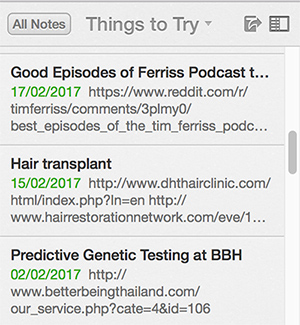
Day of Surgery: 22/2/2017
As you might expect, hair transplants are long procedures.
They can take several hours, and for true bald eagles, even several days.
My operation was due to start at 9am, and I wouldn’t leave the clinic until 6pm.
It was a strange experience catching the skytrain to Ari in rush hour, knowing that 10-15 doctors and assistants would be taking a similar route and I would be their task for the day.
The poor bastards.
I arrived at DHT Clinic around 8:30am after wolfing down a quick breakfast.
Stunning view of downtown Bangkok from reception…
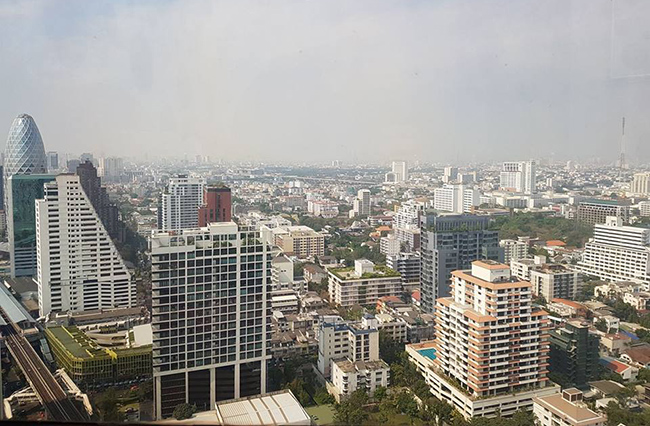
After the initial greetings, I was given a cocktail of sleeping pills and valium to take the ‘edge’ off the day ahead.
I wasn’t particular nervous, but I wasn’t going to turn them down either.
Before the operation… a standard check of the vital signs, and a quick blood test against various diseases (HIV, etc).
After a thorough antiseptic shampooing, the doctor’s assistant marked out my hairline design on another plastic sheet and started drawing various lines that would be used, presumably, during the surgery.
At that point I met Dr Path again, this time in his funky pyjama surgeon get-up.
We spoke about the procedure and finalised how many grafts would be used, and the density.
DHT Clinic was fantastic throughout the entire process, but if I could nitpick a single complaint, it’s that you probably shouldn’t expect a patient to follow along with hair graft density calculations when he’s just chowed down a bunch of sleeping pills.
I was basically nodding along to anything at this point.
“Whatever you think, doc.”
Finally I was guided through to the operating room, which had a reclined chair lined with pillows — with a large hole in the front to rest my face.
The radio was playing bizarre Thai pop music, which is about all I remember as the gaggle of assistants promptly began massaging my feet and legs.
Hospitality, mate.
Next up, the strip harvest.
This is probably the most uncomfortable part of the op, where the surgeon slices a thin strip of skin from the back of the head.
I don’t have a picture, obviously, but here’s what it looks like (not for the screamish).
It looks worse than it feels.
My noggin was fully numbed by several injections at this point.
The only sensation I could discern was the sound of the blade delicately cutting through my scalp.
A sort of unstitching sound.
Followed by, literally, a stitching sound, and the snip snip of twenty-something staples being pressed in to my head.
Again, sounds gruesome, but it was pretty much pain-free.
The action was out of sight and out of mind.
(In contrast, I found LASIK considerably more uncomfortable.)
After about an hour, the donor strip had been taken, and I looked up to find 8-10 assistants slicing it up in to thousands of tiny follicular units, each containing between 1 to 3 hairs.
The rest of the day would be spent painstakingly ‘planting’ these grafts in to what would become my new hairline (and mid scalp).
This process… took about six hours.
Turned on to my back, two doctors began delicately planting each graft – one by one by one.
Lunch time came and passed.
Several of the assistants who had taken part in the graft harvesting disappeared throughout the day.
Dr Path would come and go, with the occasional offer of sleeping pills and more painkillers.
I didn’t take them as I wanted to be fully cognisant for my journey home.
Throughout the day the assistants would take turns giving me foot massages, helping to pass the time.
To be honest, it felt more like a spa session than a hair transplant.
Finally, at around 6:30pm, the procedure came to an end and I was given the back and sides ‘mirror’ treatment, as you would after a haircut.
I can’t remember my words but they were along the lines of:
“Thank you very much, I look mental, but thank you very much. Mental.“
They led me back in to the waiting area where I was offered a quick meal and shown how to put on a bandana, which I would need for the journey home.
I was also given a compression headband — key for reducing the swelling over the next few days.
I paid the bill, hailed a Bangkok taxi, and set off home to scare the living shit out of my waiting dogs.
Day 1 Post Op
My objective for the next day was simple:
Get the rest of my head shaved.
FUT, unlike FUE, doesn’t require a buzz cut prior to the surgery. This left me with the horrendous two tone look you see above.
Bald and Bristle.
The clinic had told me I could get the hair evened out the next day, which I saw as pretty much mandatory.
First night, I went to bed with my head raised in ones of those neck cushions that you’d pick up in Boots at the airport.
I slept well.
Until… about 4am when I woke up with the back of my head feeling, as you’d expect, rather tender.
Like it had taken a holiday to the fires of Hell… would be a better description.
So, that’s what the extra painkillers were for, eh?
I bolted them down and the searing discomfort was gone within 15 minutes.
The next day, I returned to DHT Clinic to have both the recipient and donor areas examined, as is the norm post transplant.
All clean was the verdict.
The team had done a fantastic job.
I was also given a demonstration of how to clean and wash my hair properly using a luminous red antiseptic shampoo.
My takeaway thought:
“I really don’t want to get that shit in my eyes.”
Several hours later, as I danced around the shower naked, swearing and clawing at my burning retinas, the verdict came back strong:
No.
No, you really didn’t want to get that shit in your eyes.
Day 2-5: A Scabby Man
The first few days were marked by the scabbing process and a much-needed buzz cut.
By the time the scalp had ‘cooled down’, the swelling had reduced, and the scabs had been and gone (helped by coconut oil)… I quite liked the buzz cut look I was left with.
Ironically, I’d never had my hair this short.
Of course, it was helped by the newly inserted grafts… which I’d soon be losing in the shed phase.
One thing I learnt over these days was the importance of the compression headband.
It traps the swelling above the band.
If you forget to wear it… the swelling travels down your face and you’ll wake up with two black eyes.
Not a good look, at a time when good looks are hard to come by.
The scar itself was recovering well.
Was taking every last ounce of willpower not to pick at the immense crust forming on the back of my head.
Every time I caved, I’d quickly regret it.
A bloody handful of half-dissolved stitches and fresh crimson seeping from the wound is a useful reminder. Not. To. Pick. The. Scabs.
RESIST!
Day 14: Stitches Out; Shedding Begins
After around 10 days, I had the remaining staples removed from the back of my head.
21 stitches in total.
Was glad to see the back of them; especially the dissolvable stitches — which were by now dangling in No Man’s Land, hanging out of my head like pieces of frayed string.
If I gave them a tug, the string would either ease free… or cause a shooting stinging sensation.
Again… RESIST.
At around 10 days, I began to notice the new grafts shedding.
I’d shampoo (extremely delicately) and notice hairs in my hands.
“Here we go, then. See ya later, buzz cut.”
Days 21-30: An Ugly Duckling is Born
The first few weeks post hair transplant are a cruel, cruel process.
First comes the euphoria.
Well, I’ll be buggered, I’m going to have HAIR.
Then as the scorched earth scalp redness subsides, and the swelling goes down, you can already see the makings of your new hairline.
Unfortunately, you know it won’t last.
After the initial hair transplant comes a dramatic shedding process.
Around 80-90% of those newly inserted grafts fall out, naturally, in the first month.
It’s normal (but it still takes the wind out of your sails).
Under the surface, the roots will have taken hold.
They enter a dormant stage before growing back after 3-4 months.
In the meantime… it can be mentally challenging to see the new hairline, and then lose it.
Clump by clump. Hair by hair.
As the shedding gets underway, the patient enters what is known as the ‘Ugly Duckling’ phase.
And as most FUT/FUE patients will confirm, this is the hard part.
It’s not just the shedding that constitutes an ugly motherfucker.
There’s also the shock loss.
Due to the invasive nature of FUT, many patients suffer dramatic hair loss around the donor site in the weeks after surgery.
It can take several months for the hair to grow back.
Well, as you can see below, I got the arse end of the shock loss deal.
“Just a warning: I look like somebody’s been at me with a lawn mower.”
— March 2017 stump speech, if required to remove cap in public.
2 Months: Signs of Life
You know what helps to speed up a hair transplant recovery?
I’ll tell you:
Catching the norovirus.
On a trip to Krabi, I contracted a severe strain of vomit and shits, which did wonders for my perception of time.
In the sense that I no longer cared about the changes happening on my head. Only those falling out of my guts.
The last few days were horrific.
And flying home was the worst.
Flying with food poisoning is an indignity I’d wish on probably less than ten people, off the top of my head (give or take a couple).
When we land, I haven’t had anywhere near enough water for the 38 degrees Bangkok furnace.
It tells.
I’m dizzy, delirious, anxious…
I know full well, it’s a race against the clock.
I am going to shit myself.
The only question is where.
“The worst flight of my life,” I tell my fiance, grey-faced, in the middle of a tantrum at Don Muang Arrivals. By this point I’m scowling unbridled terrorism at anybody who makes eye contact with me, interchangeably shoving wafers and Imodium in my face.
“But you handled it really well,” comes the reply.
I nod my head.
Several decades pass before I realise she’s taking the piss.
Silently my hair continues to grow.
[/AdrianMole]
3 Months: Day Zero
Progress!
The recovery from a hair transplant follows a reverse bell curve.
You start with excitement and enthusiasm, which is swiftly replaced by a downer as you face up to shedding, shock loss, and the loss of novelty in it all.
The general consensus is that after 2 months, you will recover sufficiently to reach the same stage that you were pre-transplant.
As in… if you hadn’t seen somebody since the day before your hair transplant, and you saw them 2 months later, they shouldn’t notice too much difference in your appearance.
Personally, it took me around 3 months to reach this Day Zero.
Due, mainly, to shock loss.
Both in the donor area, but also in the recipient area where some of my ‘good’ hair around the temples had taken a while to grow back.
I was also suffering from intermittent folliculitis; which is very common when new hair is attempting to break through the skin.
Regardless, to reach ‘how I was before’ was a big thing psychologically.
You can then get excited that it’s all ‘new hair’ from here.
That shit you paid for when you signed up for the transplant.
Typically, in keeping with my personality, I started to lose interest in the recovery as soon as I reached Day Zero.
I no longer felt awkward going outside without my cap.
I slowly began to forget about what was happening on my head.
New hair growth is so subtle and slow that the effects will be noticed more by other people than by yourself.
If you’re reading this thinking a transplant will have a transformative effect on your life, filling you with oodles of newfound confidence and vigour…
Nah, mate.
The Self adjusts accordingly.
You’ll be less invested in the results just as they’re rearing their tiny follicular heads.
4 Months: Rapid Growth
The 4th month post-surgery marked some rapid progress.
My left temple has been around 6 weeks ahead of the right temple. Probably because it managed to retain some of the original grafts.
I also had more hair on that side to begin with.
(A common genetic MPB trait, according to the doctor.)
Not only was I seeing a lot of new growth by Month 4, but the hair around my crown was thickening up from the prescribed 5mg Minoxidil and 5mg ProScar taken daily.
The areas of shock loss were slowly growing back; barely distinguishable with my hair kept longer. Although, as you can see in the image below, it was still noticeable with wet shorter hair.
Any tenderness or loss of sensation to my scalp had disappeared by this point.
The scar was now just a faint pink line.
I was told it would be invisible unless the hair was cut to a 2 grade, and that was certainly the case with my usual mop.
5 Months: Pretty Hairy
Here we are now, in the present, just over 5 months post-surgery.
It’s at this point that most people begin to report substantial new growth and a major change in hairline appearance.
I think I’ve been around one month ahead of schedule throughout most of the process.
Things are definitely moving fast.
Apparently a warmer climate, massaging the scalp, and eating well can help to spur growth.
(Unlike a lot of FUT patients, I haven’t taken any additional supplements or used any fancy hair products.)
My hair has always grown ridiculously fast. Being younger than the average FUT patient, too, perhaps explains why I’m further along the timeline.
Appearance-wise, the right temple is catching up with the left.
They both now appear fully ‘filled in’.
The hair is getting thicker week by week – definitely most noticeable when it’s wet.
All of the areas that suffered shock loss have grown back.
The crown seems to be thickening, too, although that could just be depth perception given my hair is now much longer than I’m used to keeping it.
Five months down, and I’m way beyond Day Zero.
Very happy with the results so far.
In Summary…
This was initially going to be a 12 month diary.
It takes over a year to see the full results of a hair transplant, so I’m still less than halfway through the process.
Over the next six months I should see more growth, plus thickening of the hair and changes in texture.
That’s all gravy.
But I’m pleased with the results already.
If I didn’t grow another hair, that’s fine by me.
Which is how I should probably end the most self-indulgent blog post I’ve ever brainfarted in to existence (“Marketing blog, he says!”).
Why post about your hair, Finch?
When I was researching the operation, ‘follow along’ diaries were my catnip.
They were some of the most useful resources for understanding the hair transplant process.
(Yes, I did check to ensure that it wasn’t one of you affiliate bastards penning them.)
I know hair loss is a thing that affects a lot of men — and women — so I have no qualms in spilling my guts like this.
Overall, I’m really glad I had the transplant.
I wouldn’t describe the process as ‘life changing’ by any stretch, but I’m happier with how I look, and I’m not filled with that same dread: “Oh god, what’s gonna be left of my hairline in ten years?”
That’s not to speak down on any readers who are Bald And Proud, either.
If you’re happy with it, who gives a shit, right?
For some people, the bald look is a winner.
Alas, so ends my little story.
I hope the above does a decent job of summarising what to expect if you are one of the 0.02% of readers considering FUT.
Failing that…
I hope it explains why I have somewhat more hair than I did 6 months ago.
Thanks for reading.

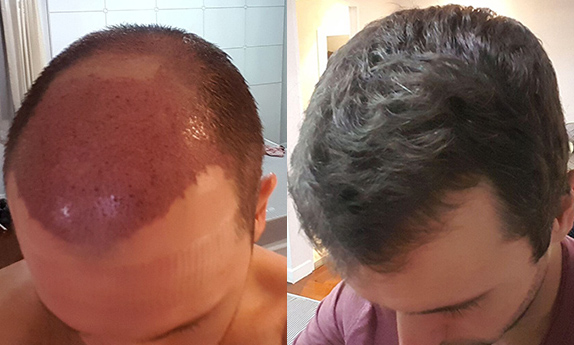

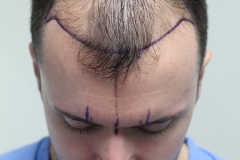
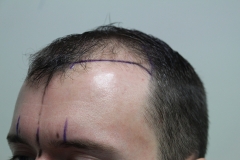

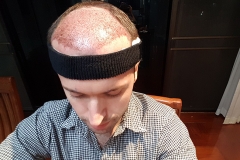
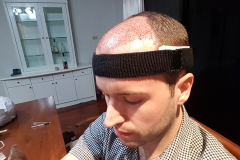

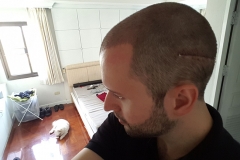

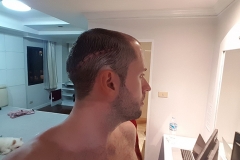

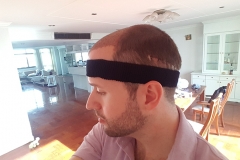

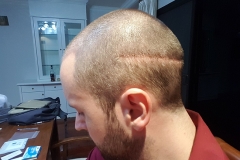
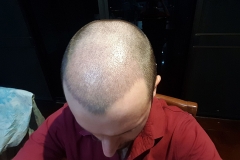
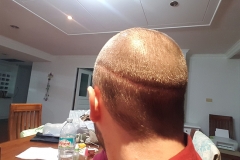

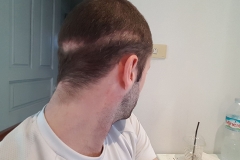
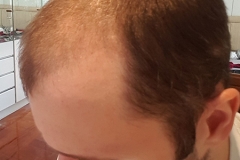
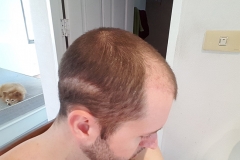

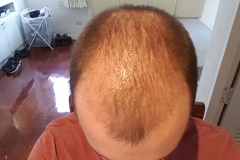
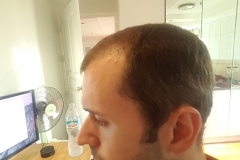
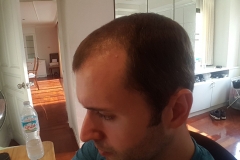
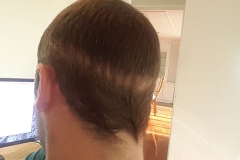
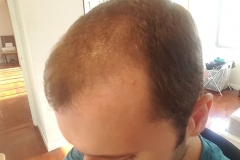
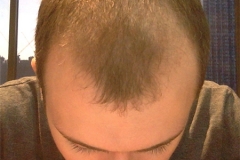
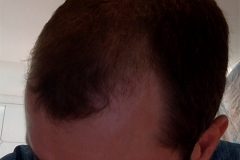
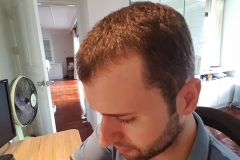
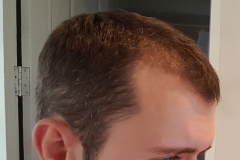

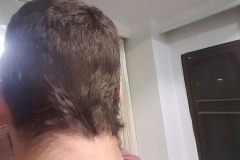
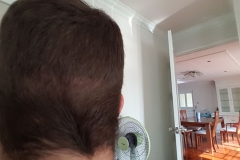



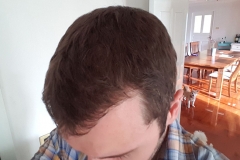


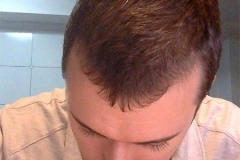
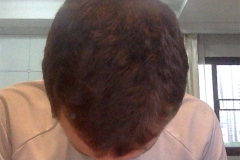



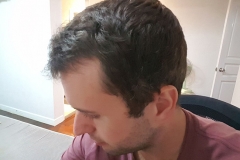



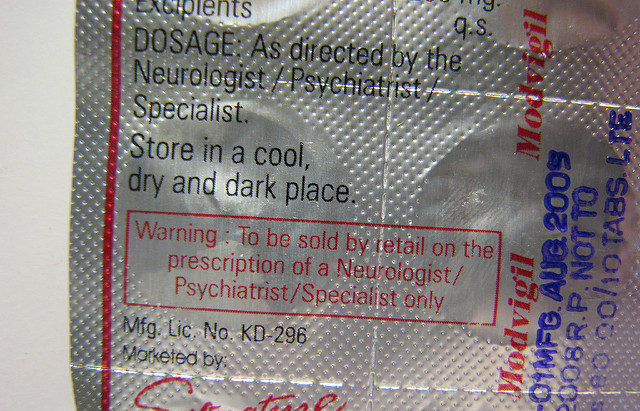




Thanks for that Finch. It was a great read. I am in day 3 and was looking a timeline which…